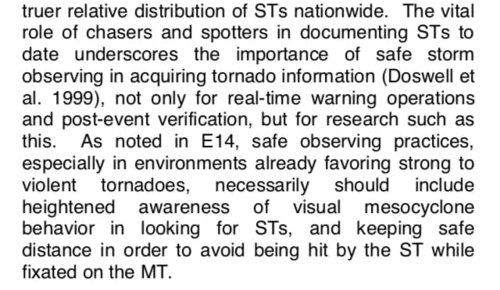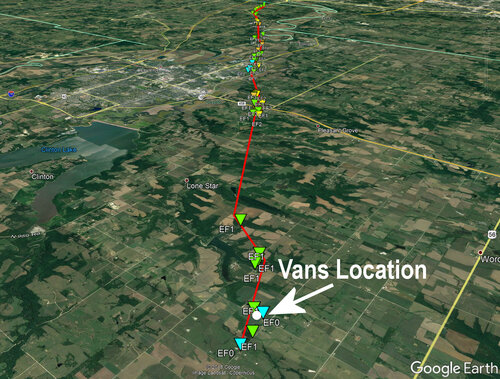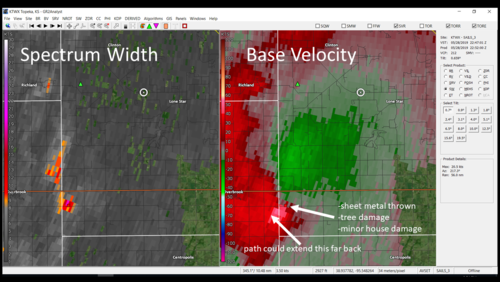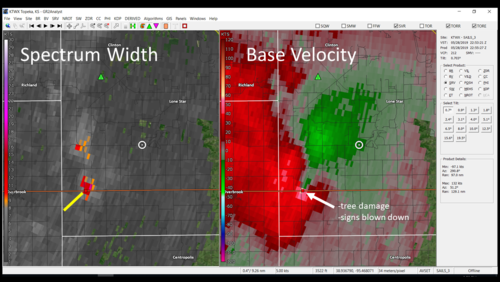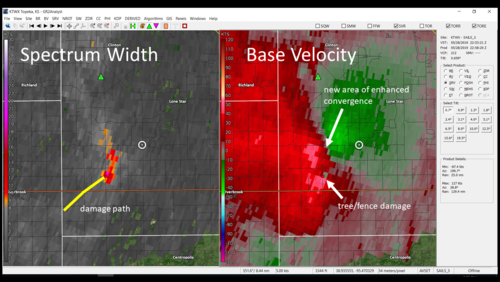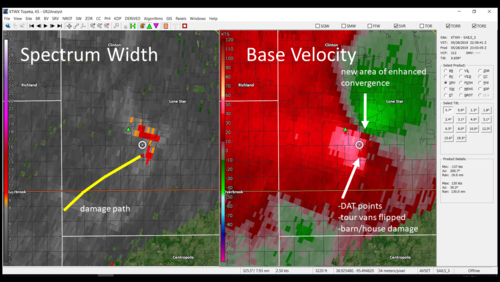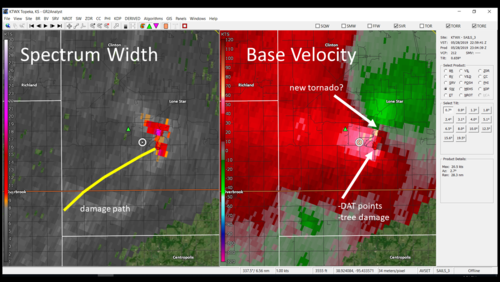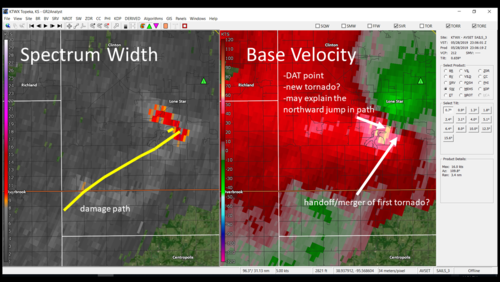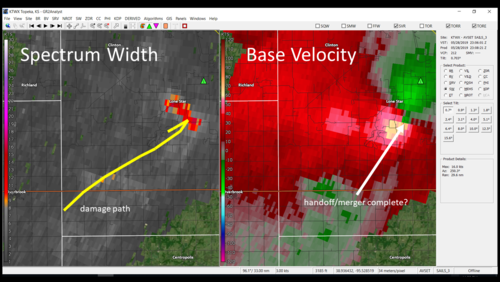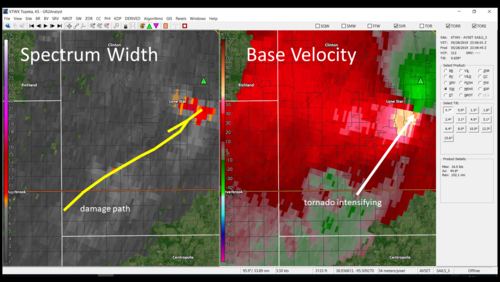Not drawing any conclusions here, but either NWS Topeka or the above accounts are in error, misunderstanding something, or incomplete in information.
The damage survey sure makes it look like they were hit by the main tornado, but I've seen significant errors in surveys before. But even so, the impact location is in line with the latter part of the track, so I'm struggling to come up with a scenario that jives with the above accounts.
:\
I'm not pointing fingers or trying to tear people down. People I like and consider friends are involved here. I worked hard on the El Reno Survey with lots of other folks because I didn't want to see any more friends killed by tornadoes, so that we could learn and better ourselves.
So, seeing the preliminary track that Skip showed, I decided to go pull the data from the nearest radar (TWX 88D). The radar was ~40 miles from the start of the preliminary track location, and the radar beam on the lowest elevation angle was centered ~1.2 km AGL. I have no information about the tilt of any tornadoes from this height down to the ground. It's not unusual for the circulation associated with tornadoes to be tilted (sometimes by 45 degrees or more). What follow is a very quick look at data from the lowest elevation angle only. It's mainly done out of curiosity about the start of the tornado. At this point, this might as well go into an event discussion thread.
It looks like there was a small circulation of some sort before the start of the tornado track by several miles around ~2255 UTC.
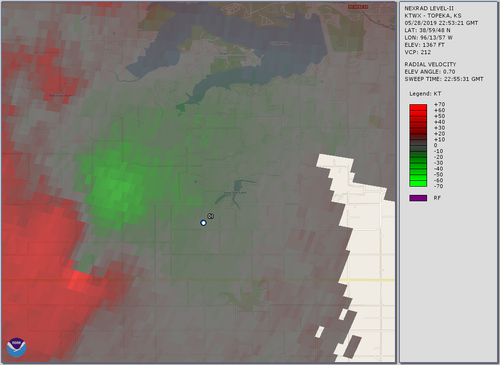
It looks like this circulation moved generally ENE:
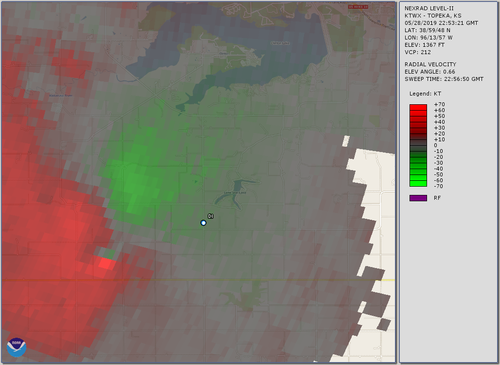
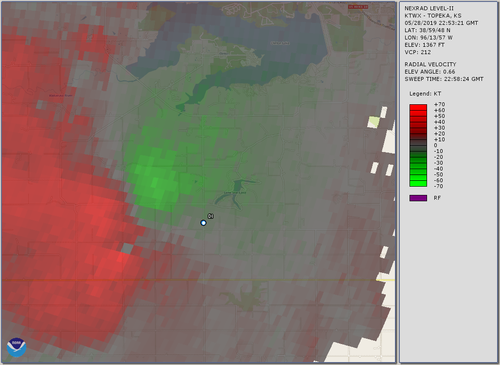
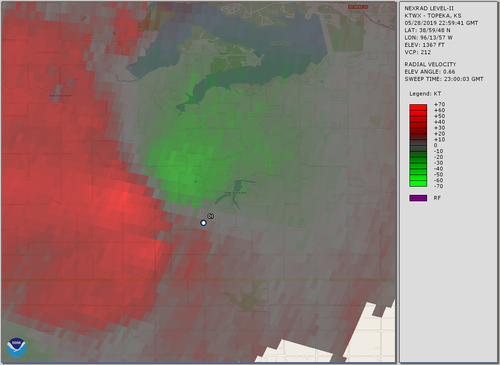
A larger area of convergent, cyclonic rotation was located to its north during this time. Unfortunately, between 2300 and 2303 UTC, it's not entirely clear how this situation evolved. By 2303 UTC, there's a small indication of the earlier circulation, and the larger-scale circulation remains centered generally a mile north. However, by 2304:40 UTC, indication of the original, smaller circulation is again apparent ~1 mi to the south of the larger circulation.
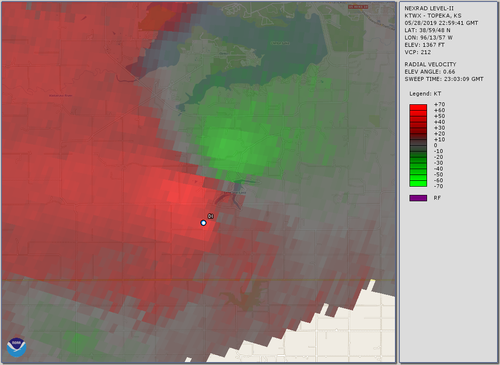
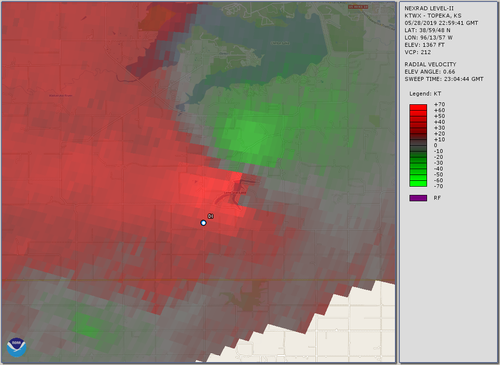
After this scan, the velocities begin to intensify more significantly, or at least those that are associated with the parent circulation do. Note that there isn't particularly significant gate-to-gate shear yet, at least nothing like what we see later.
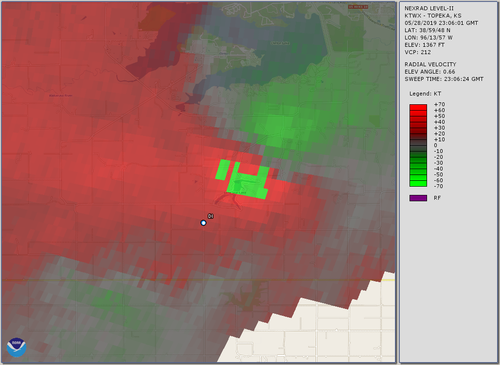
So, did the original, small vortex that moved ENEward from ~2255 to 2305 on onward go on to become the "Lawrence" tornado as the preliminary survey indicates (perhaps when it became better situated within the broader area of convergent, cyclonic rotation), or was it a separate tornado? These data, by themselves, cannot answer that question; a more thorough analysis is needed.
*This is an extremely cursory analysis of the TWX data, and it is far from conclusive at this time.*
Edit: What little speculation I had wasn't needed and has been removed.

